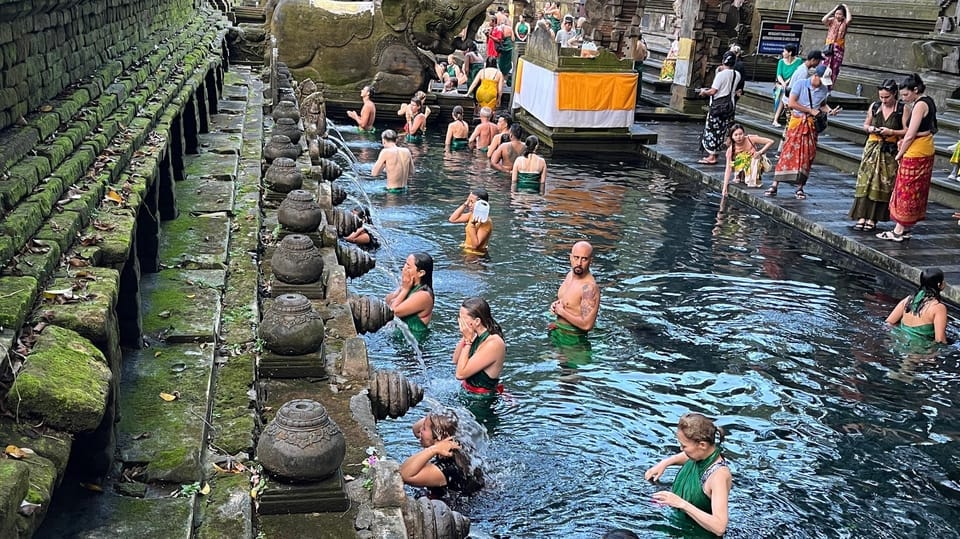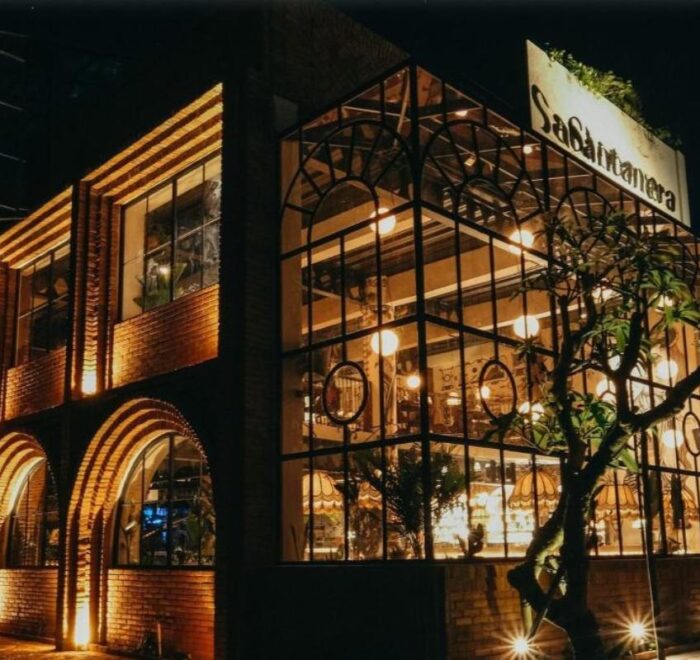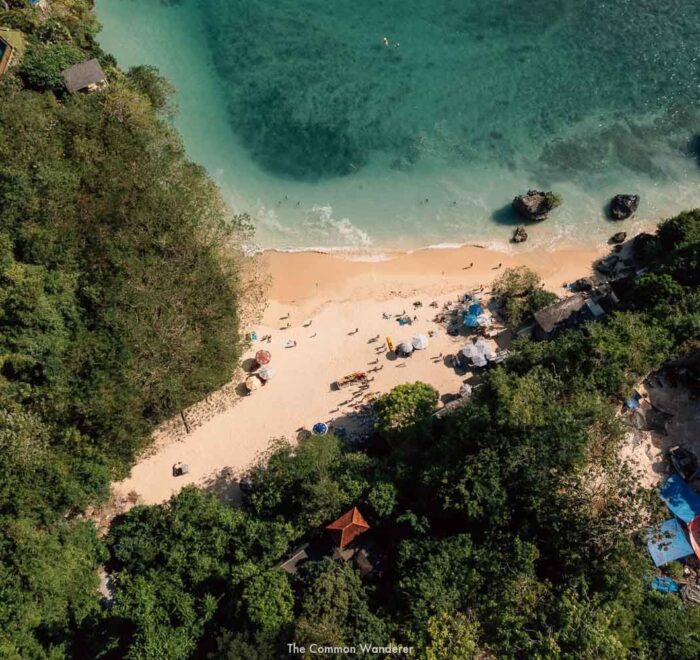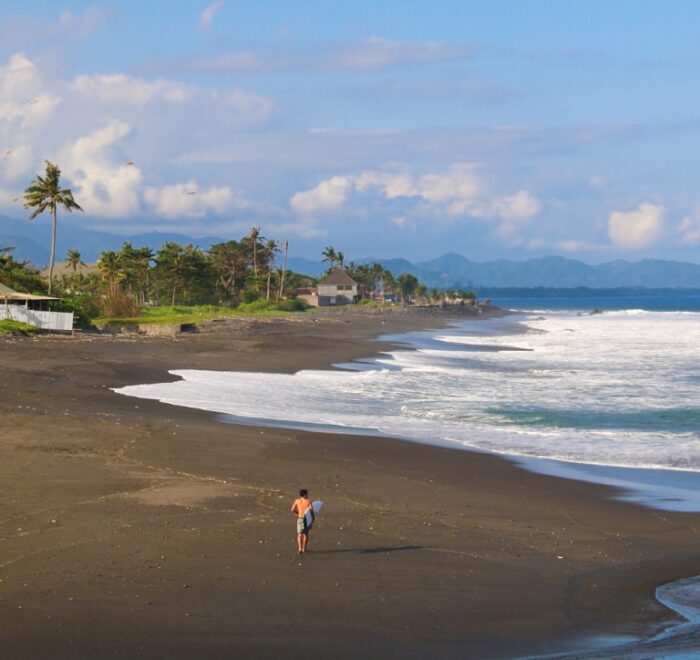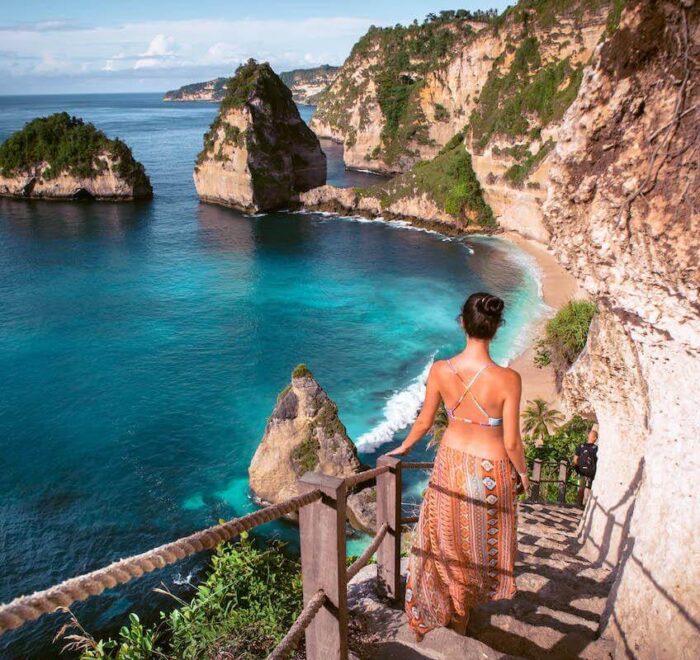Pura Tirta Empul Bali, is a historic temple known for its sacred holy springs and purification rituals. Built in 926 A.D., this temple is a key spiritual site for Balinese Hindus. Visitors come to cleanse themselves in the holy waters and experience a piece of Bali’s rich cultural heritage. This guide will walk you through everything you need to know about visiting Pura Tirta Empul Bali, from its significance to practical tips.
Key Takeaways
- Pura Tirta Empul is a historic water temple in Bali, known for its purification rituals and cultural significance, accessible within 30 minutes from Ubud.
- Visitors must adhere to a strict dress code and etiquette, including covering shoulders and legs and avoiding the temple during menstruation to respect its sanctity.
- The temple offers immersive purification experiences, particularly during the full or new moon, and is surrounded by attractions like Gunung Kawi Temple and Tegalalang Rice Terraces.
Location and Accessibility
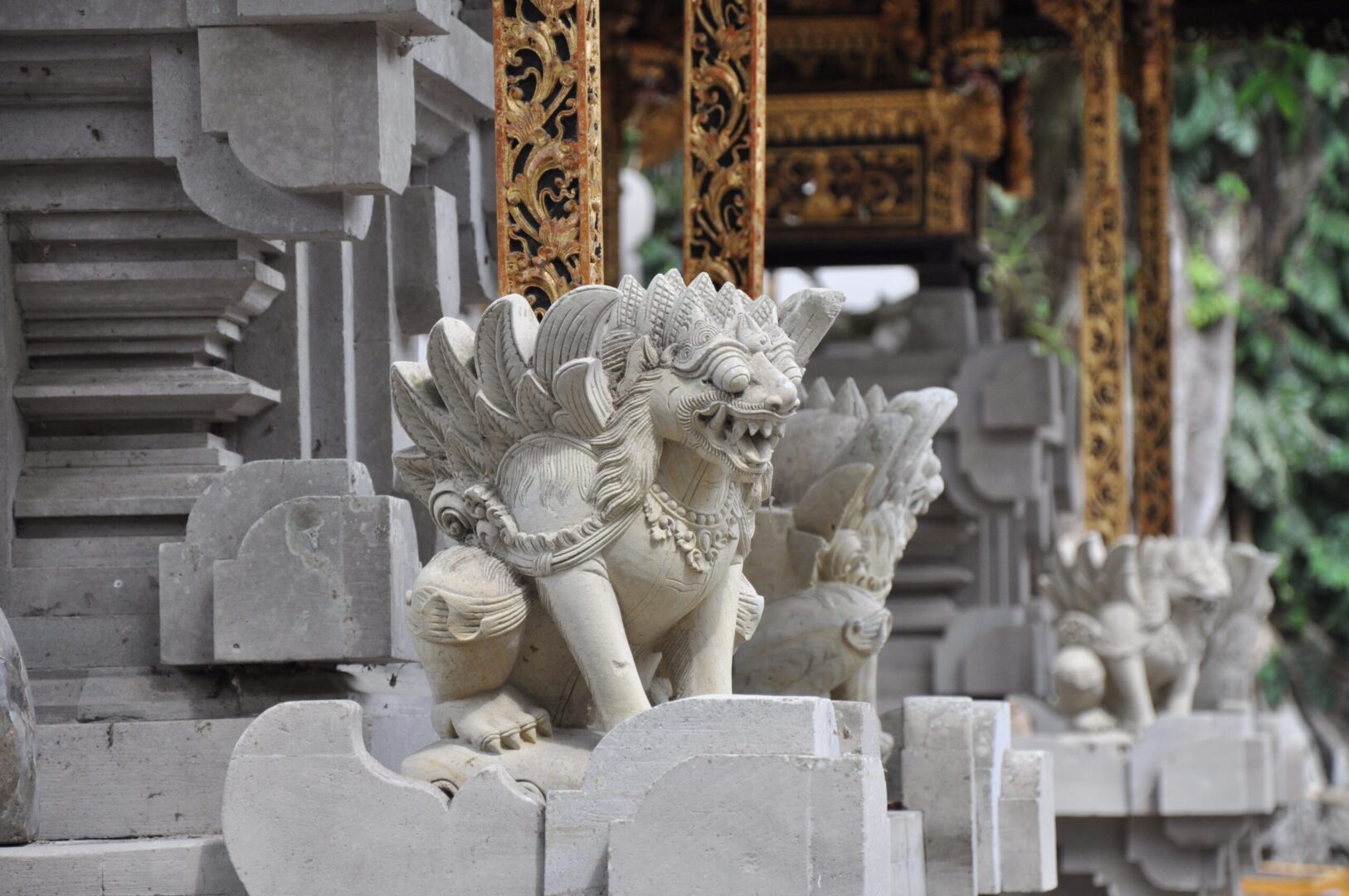
Source: bali.info
Pura Tirta Empul is located in the tranquil village of Manukaya, approximately 14 kilometres north of Ubud Town Centre. This central location makes it easily accessible for travelers based in Ubud, with a typical journey taking around 30 minutes. For those coming from further afield, such as Ngurah Rai Airport, the drive to the temple takes about 1 hour and 30 minutes, offering a scenic route through Bali’s lush interior.
There are several transportation options to reach Pura Tirta Empul. Renting a scooter is often highlighted as the most economical and convenient choice, with daily rental costs ranging from 50K to 70K rupiahs.
For a more relaxed journey or if unfamiliar with local driving, hiring a private car with a local driver or joining an organised tour offers a stress-free schedule. Each mode of transport offers a unique way to experience the journey, adding to the overall adventure of visiting this sacred site.
The Significance of Pura Tirta Empul
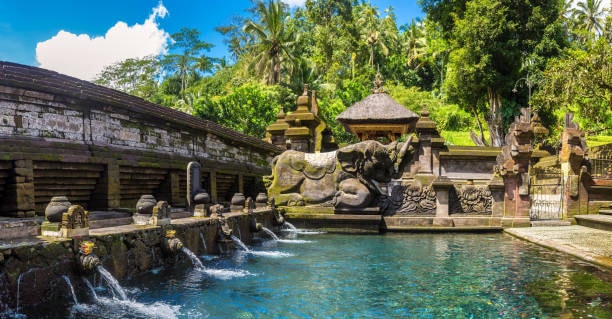
Source: istockphoto.com
The roots of Pura Tirta Empul stretch back to 926 A.D., marking it as a site of profound historical importance. This ancient temple, nestled in the heart of Bali, is revered not only for its age but also for its spiritual significance. The name, translating to “water gushing from the earth,” reflects its role as a holy spring water temple and its importance in Balinese Hindu purification rituals. The temple complex is a testament to the enduring cultural heritage of Bali, symbolising the victory of good over evil as commemorated in numerous rituals.
The legend surrounding the holy spring at Tirta Empul adds to its mystical allure. According to local lore, the spring was created by the Hindu God Indra to cure his poisoned troops, imbuing the water with healing properties. This story underscores the temple’s role as a sacred site where Balinese Hindus perform purification rituals using the blessed water. The temple is more than a place of worship; it embodies the island’s spiritual traditions, attracting locals and tourists seeking its cleansing powers.
A visit to Tirta Empul temple complex is a journey into Bali’s spiritual heart. It stands among the island’s most revered temples, offering a unique glimpse into sacred practices. The layout, rituals, and serene atmosphere make it essential for understanding Balinese Hinduism. From the tales of the god Indra to the ongoing purification practices, Pura Tirta Empul blends past and present, making it a key stop for cultural exploration in Bali, particularly regarding the Tirta Empul temple location.
Temple Layout and Key Areas
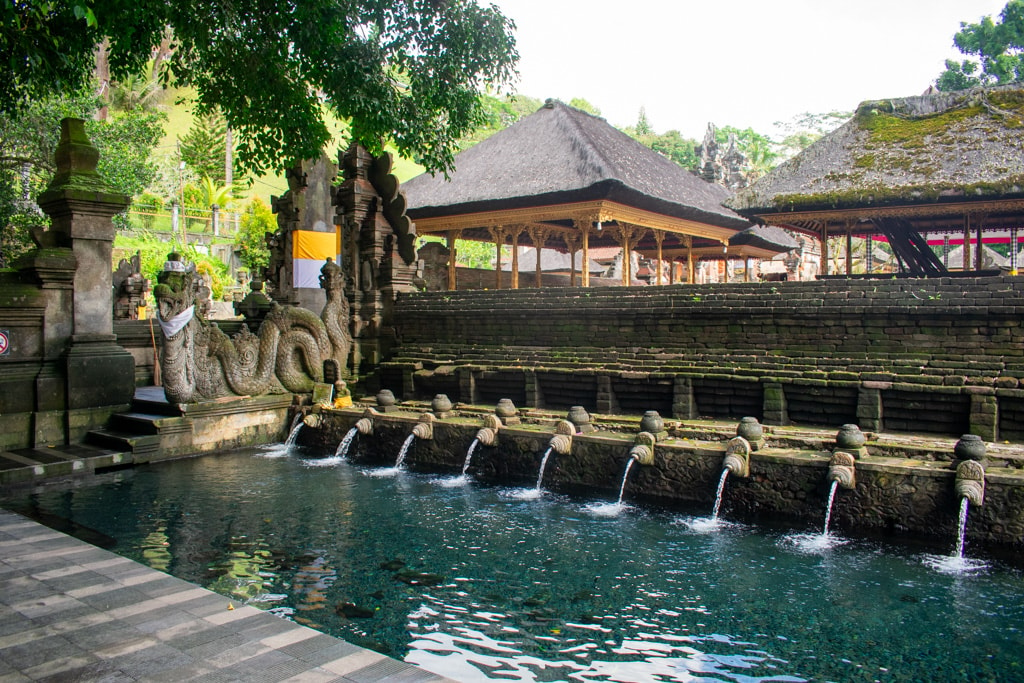
Source: baliuntold.com
Exploring Tirta Empul feels like walking through a living piece of history. The temple is divided into three main sections: the outer courtyard (Jaba Pisan), the central courtyard (Jaba Tengah), and the inner courtyard (Jeroan). Each area serves a distinct purpose and offers a unique glimpse into the temple’s spiritual and architectural grandeur. Visitors often spend 30 minutes to an hour at the entire site, absorbing its tranquil beauty and sacred ambiance.
The temple visit starts at the outer courtyard, where the majestic Balinese gate, candi bentar, welcomes visitors.
From there, one progresses to the central courtyard, the heart of the temple where the famed purification pools are located.
Finally, the inner courtyard provides a serene space for reflection and prayer, housing large Hindu shrines that stand as silent witnesses to centuries of devotion.
Outer Courtyard (Jaba Pisan)
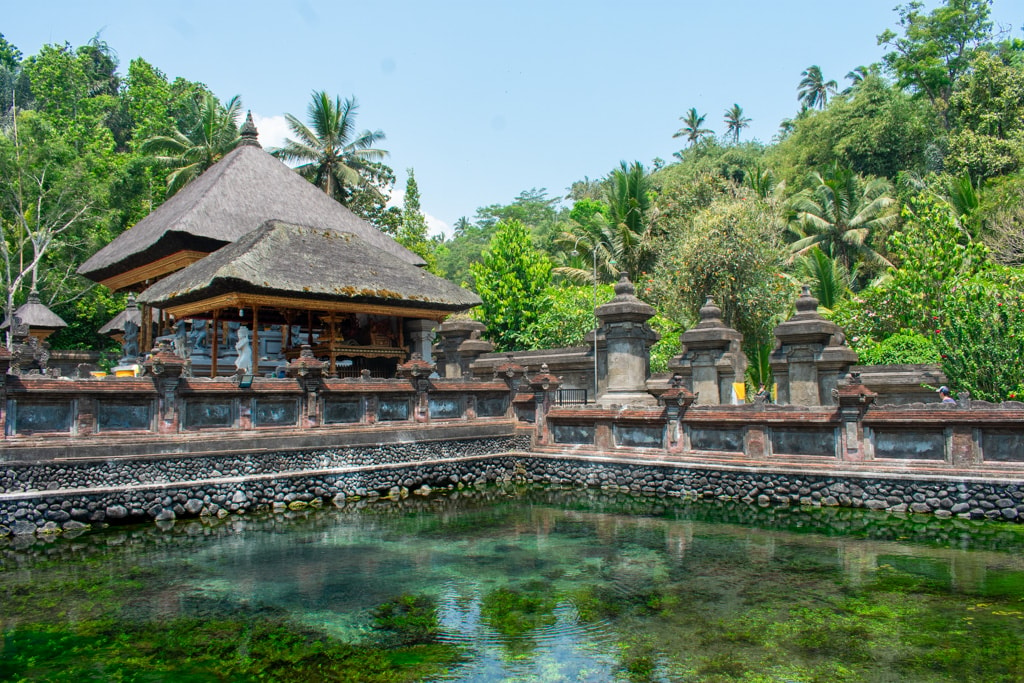
Source: baliuntold.com
The outer courtyard, or Jaba Pisan, serves as the grand entrance to Pura Tirta Empul. Visitors are greeted by the impressive candi bentar, a large and beautifully crafted Balinese gate that sets the tone for the spiritual journey ahead. This area is brightly decorated and often bustling with activity, as tourists and worshippers alike prepare to enter the sacred temple grounds.
In the outer courtyard, visitors get their first taste of the temple’s serene atmosphere. This area acts as a buffer between the outside world and the sacred spaces, transitioning visitors from the mundane to the spiritual. As you pass through this entrance, the anticipation builds for the deeper, more profound experiences that lie ahead.
Central Courtyard (Jaba Tengah)
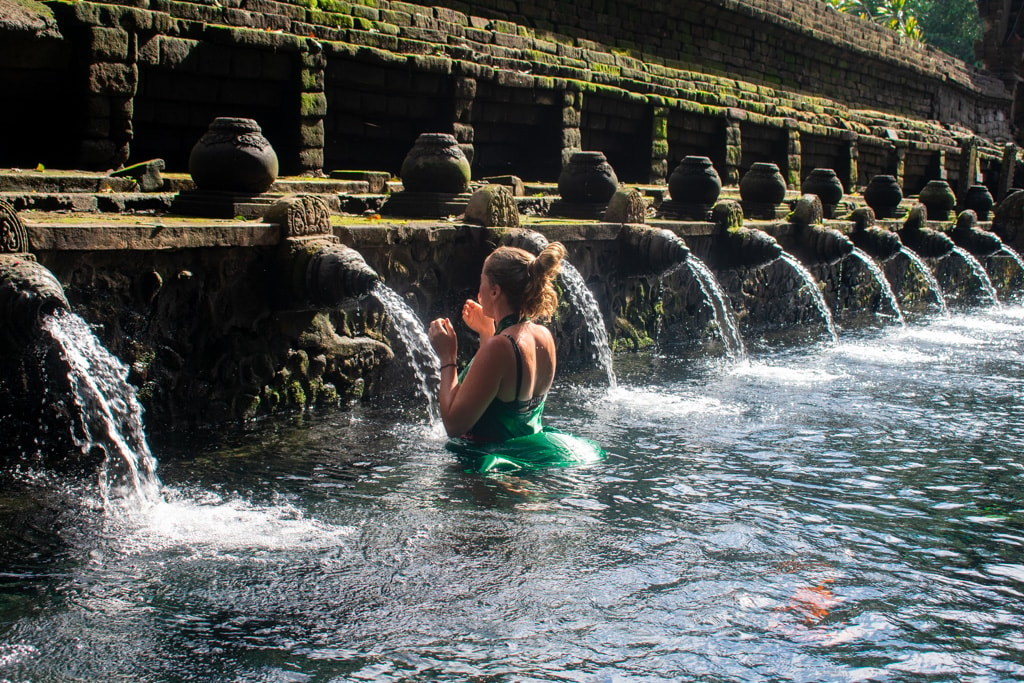
Source: baliuntold.com
The central courtyard, or Jaba Tengah, is the heart of Tirta Empul, where famous purification rituals draw both locals and tourists to its sacred pools. The courtyard is a large open space with worn stone pavements and walls, offering a historic backdrop to the spiritual activities. Supplied by natural springs, the purification pools are the main attraction.
Lined with 13 spouts, the pools are about 1 metre deep, allowing visitors to immerse in the holy water. The water from these spouts is believed to have magical powers, providing spiritual cleansing and renewal. At the end of the central courtyard, two large doorways built into the wall guide visitors towards the inner courtyard, near the holy water spring and the holy water temple.
On the right side, a large open-air pavilion offers a space for rest and contemplation. Those interested in the purification ritual should follow the path on the right to the bathing pools. This area, with its historical architecture and spiritual significance, encapsulates the essence of Pura Tirta Empul.
Inner Courtyard (Jeroan)
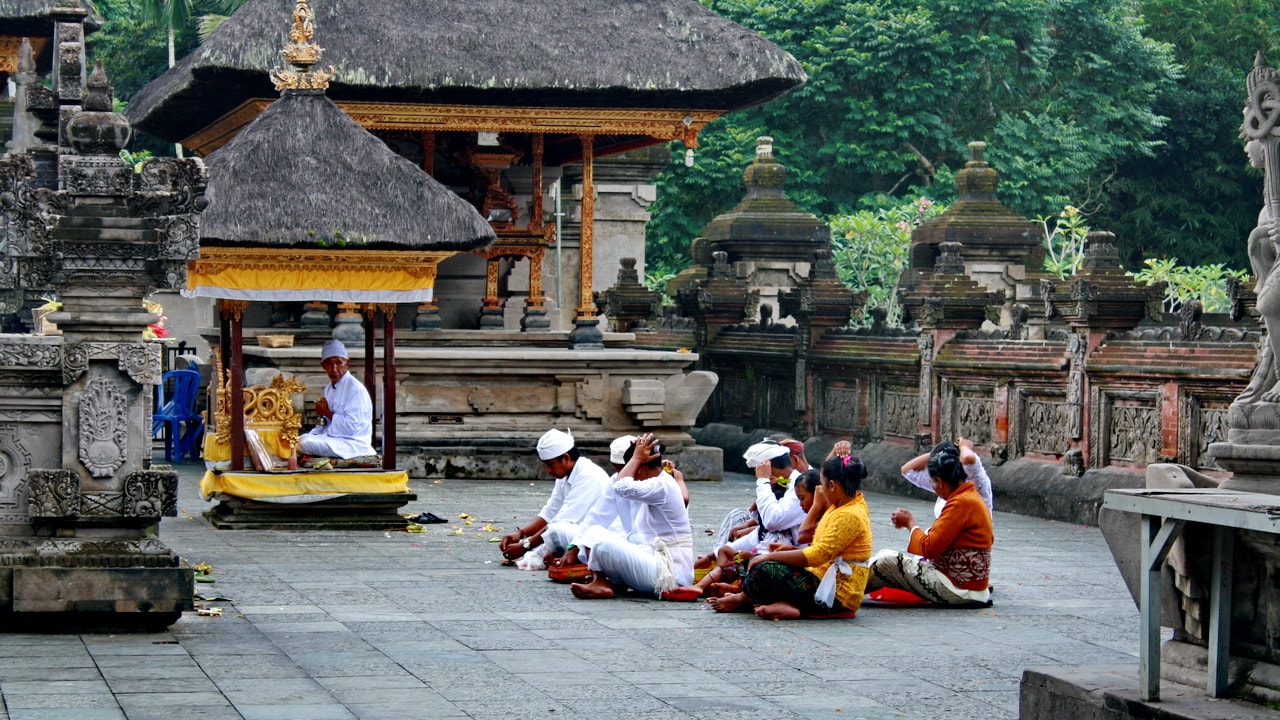
Source: dagrinizar.blogspot.com
The inner courtyard, or Jeroan, is a tranquil haven within the bustling temple complex. This area houses large Hindu shrines and serves as a serene space for Hindu worshippers to pray and reflect. This calm and relaxing atmosphere contrasts with the busier outer and central courtyards, offering a moment of peace and introspection.
As you wander through the inner courtyard, you may notice small fish swimming lazily in the ponds, adding to the sense of tranquility. This area is designed to provide a quiet retreat where visitors can connect with their spiritual side, away from the hustle and bustle of the temple’s more active areas.
These shrines underscore the deep religious significance of Pura Tirta Empul Temple and the empul temple, making it a sacred site for worship and contemplation.
Purification Rituals
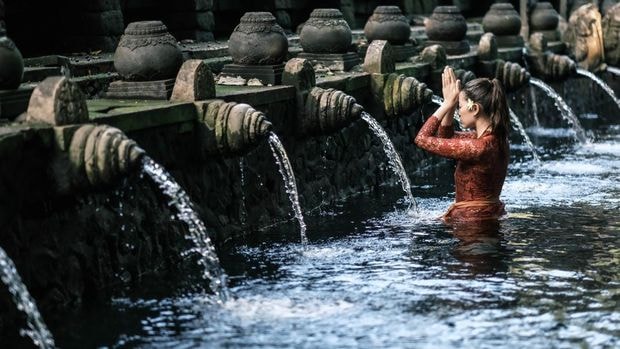
Source: detik.com
A profound experience at Pura Tirta Empul is participating in the melukat purification ritual. This purification ceremony is a cornerstone of Balinese Hindu practice, is believed to offer significant spiritual benefits. The process starts in the left pool, where worshippers use each of the 30 water spouts in a specific order for purification. This ritualistic cleansing is believed to wash away impurities and negative energy, providing a fresh start for the soul.
The holy spring water, created by the Hindu God Indra, is believed to possess healing and spiritual cleansing properties. Participants must wear special ceremony sarongs, available at the temple entrance. Menstruating women, however, are restricted from entering the purification pools, in keeping with traditional beliefs. The ritual offers a deeply personal and transformative experience, allowing participants to connect with the divine and seek spiritual renewal.
The purification pools are a sight to behold, with clear water flowing continuously from natural springs. Moving from one spout to the next, the gentle water flow and serene atmosphere create a meditative experience. This sacred cleansing ceremony is a highlight, offering a unique opportunity to immerse in Balinese spirituality and tradition.
Dress Code and Visitor Etiquette
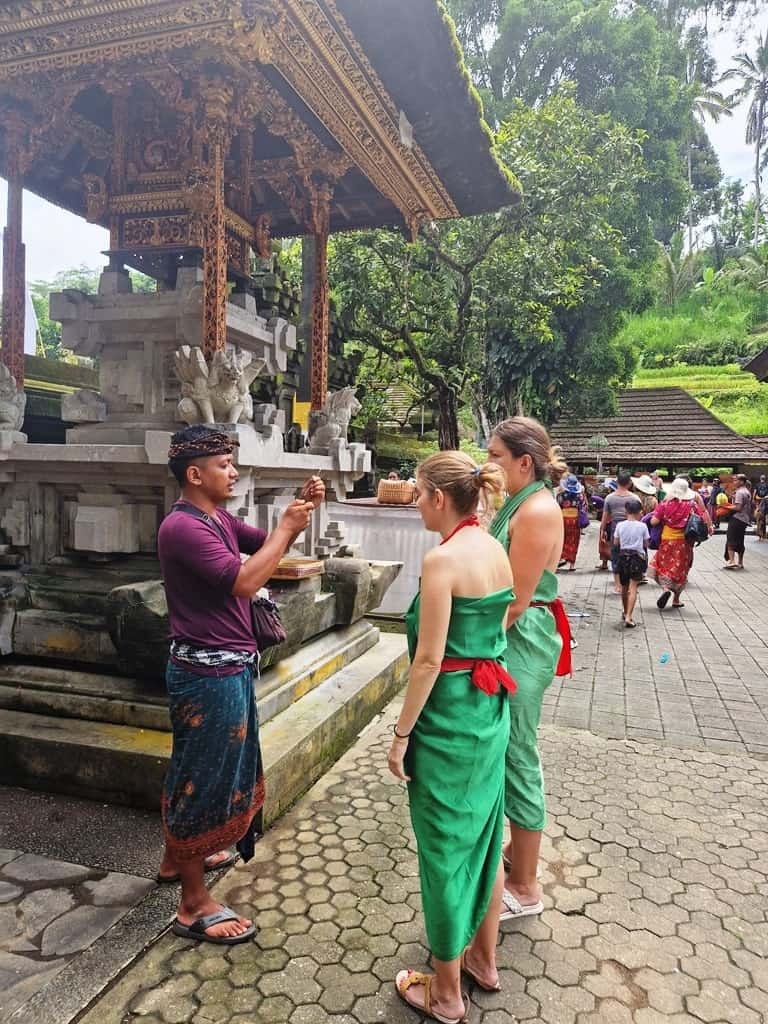
Source: travelpassionate
Due to the sacred nature of Pura Tirta Empul, visitors must adhere to a strict dress code. Modesty is paramount, with shoulders and legs required to be covered. A traditional kamen wrap or sarong with a sash is suitable attire for entering the temple. These garments are provided free of charge at the entrance, ensuring that all visitors can comply with the dress code.
Besides appropriate clothing, visitors should be mindful of their behaviour within the temple grounds. Menstruating women are asked to avoid entering the temple area and purification pools. This rule is strictly enforced to maintain the sanctity of the sacred site.
Non-compliance with the dress code and etiquette can result in being asked to leave the temple. Respecting these guidelines ensures a harmonious and respectful visit.
Best Times to Visit Pura Tirta Empul
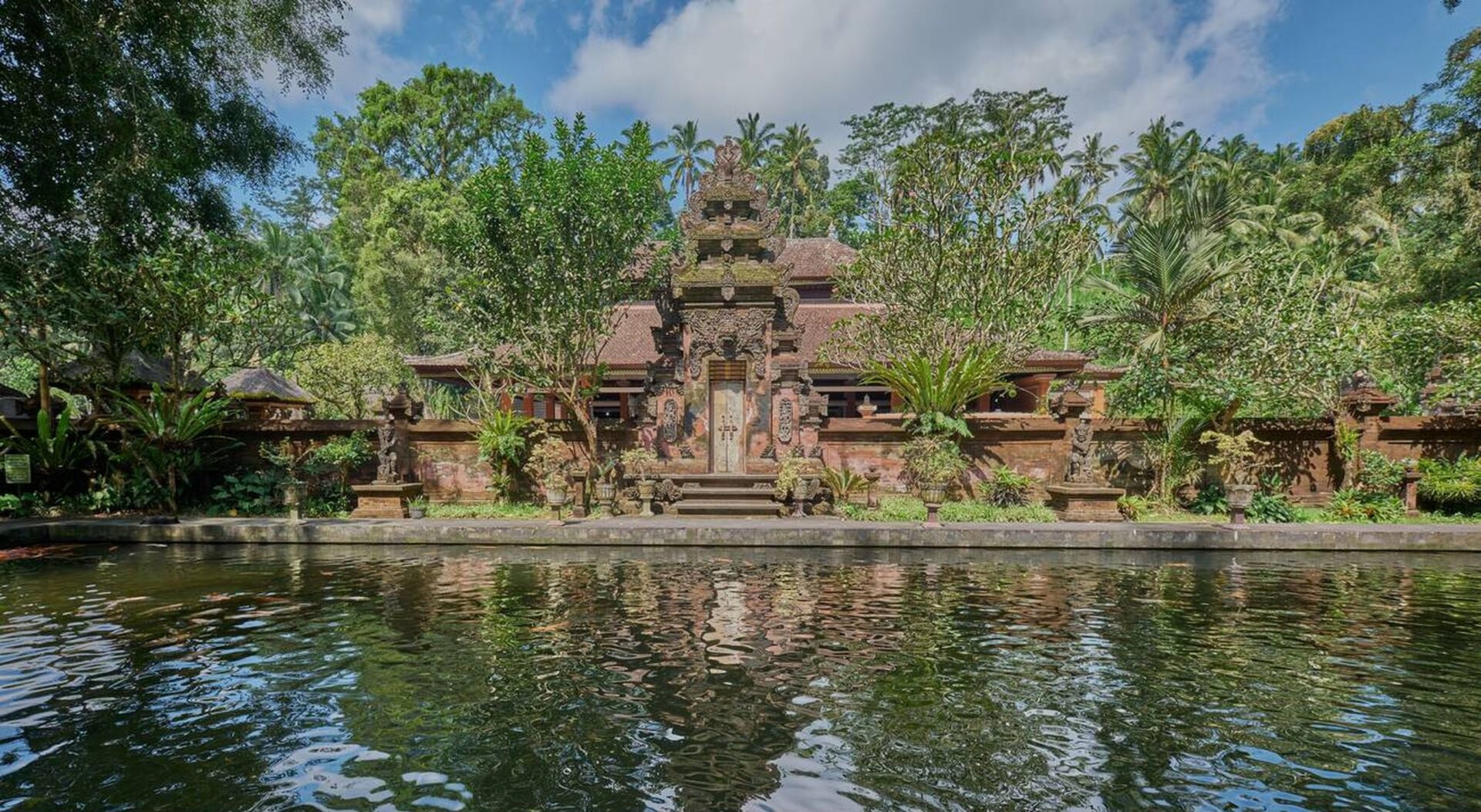
Source: whatsnewindonesia
Timing your visit to Pura Tirta Empul can significantly enhance your experience. For those seeking a spiritual journey, visiting during the full moon or new moon is highly recommended. These times are considered especially auspicious for purification rituals, adding an extra layer of spiritual significance to your visit.
For a more peaceful experience, visit Pura Tirta Empul in the morning. Weekdays are generally quieter than weekends and holidays, which attract more local worshippers and tourists. Planning your visit during these optimal times allows you to fully immerse in the temple’s serene and sacred atmosphere.
Entrance Fees and Opening Hours
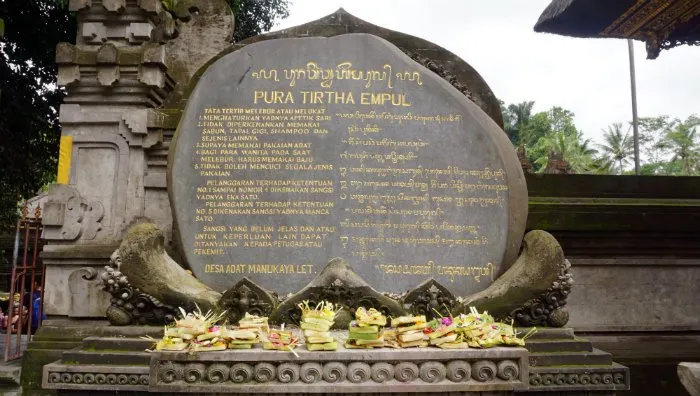
Source: ubudcenter.com
Visiting Pura Tirta Empul is an enriching and affordable experience. The entrance fee for domestic visitors is IDR 15,000 for adults and IDR 7,500 for children, while foreign visitors pay IDR 50,000. Children under the age of 5 can enter the temple for free. The temple is open every day from 7 am. to 5 pm., giving visitors ample time to explore the sacred site.
For convenience, lockers are available for rent at IDR 15,000, and bathing sarongs can be rented for IDR 10,000. Temple operations may be affected by local holidays, particularly during Nyepi, a day of silence observed in Bali. Being aware of these details allows you to plan efficiently and enjoy a seamless experience at Pura Tirta Empul.
Nearby Attractions
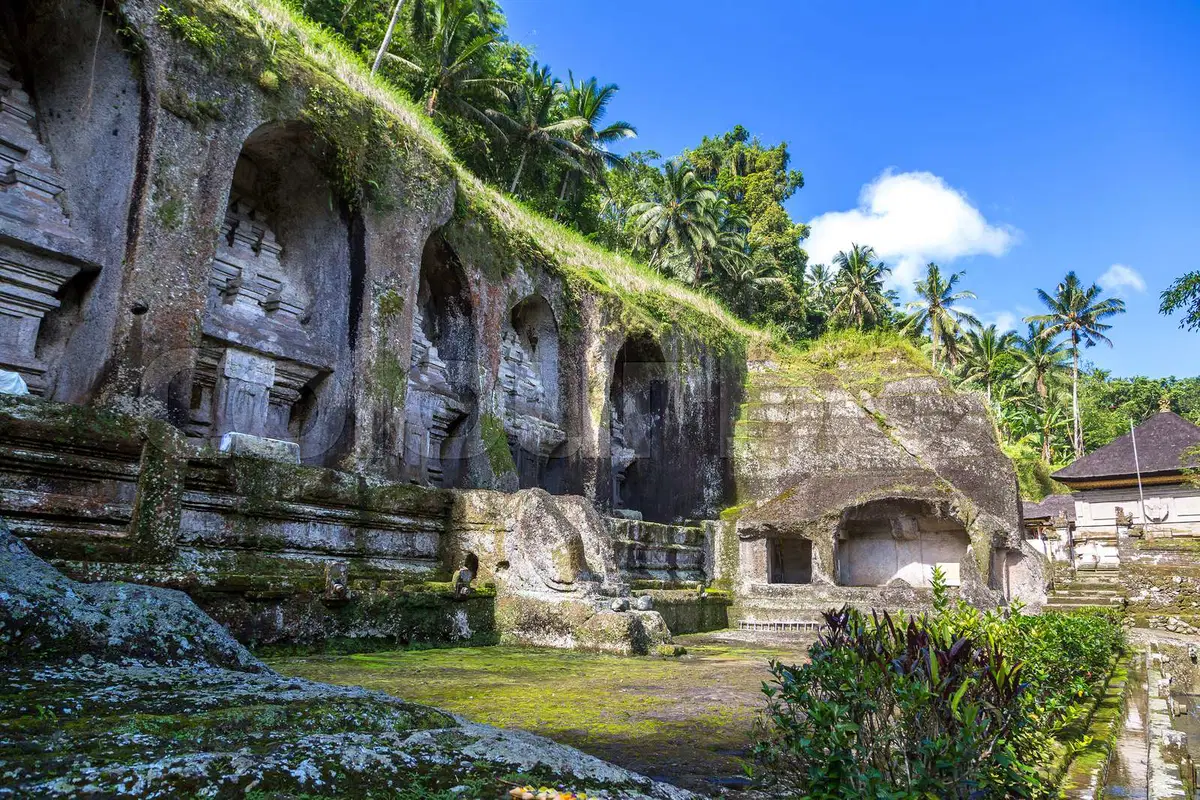
Source: colourbox.com
While Pura Tirta Empul is a highlight, the surrounding area offers several other attractions worth visiting. Just a short drive away is the Gunung Kawi Temple, known for its ancient rock-cut shrines and historical significance. This temple provides a fascinating glimpse into Bali’s architectural heritage and complements your visit to Pura Tirta Empul perfectly.
Another nearby attraction is the Tegalalang Rice Terraces, famous for their stunning layered landscapes and traditional Balinese irrigation systems. For those interested in wildlife, the Ubud Monkey Forest is home to hundreds of playful monkeys and ancient temples, offering a lively and engaging experience.
Adding these sites to your itinerary enriches your understanding of Balinese culture and natural beauty.
The Bali Res Centre Best of Ubud tour is the perfect way to enjoy all of these attractions and more.
Photography Tips
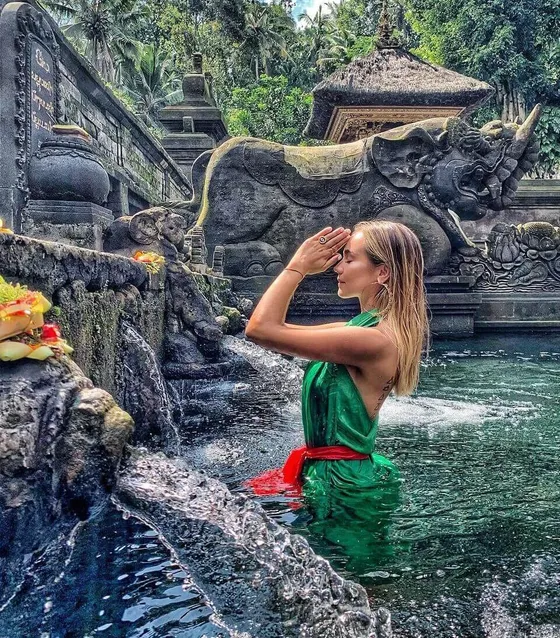
Source: forevervacation.com
When photographing within the temple, respect the sacred atmosphere. Avoid using flash indoors and be considerate about tripod placement to avoid obstructing others. Refrain from taking pictures of people praying or meditating to preserve privacy and respect rituals.
If you plan to use a drone, be sure to seek permission from the authorities, as this may require approval. Following these tips allows you to capture stunning images while maintaining the temple’s sanctity.
Safety and Health Considerations
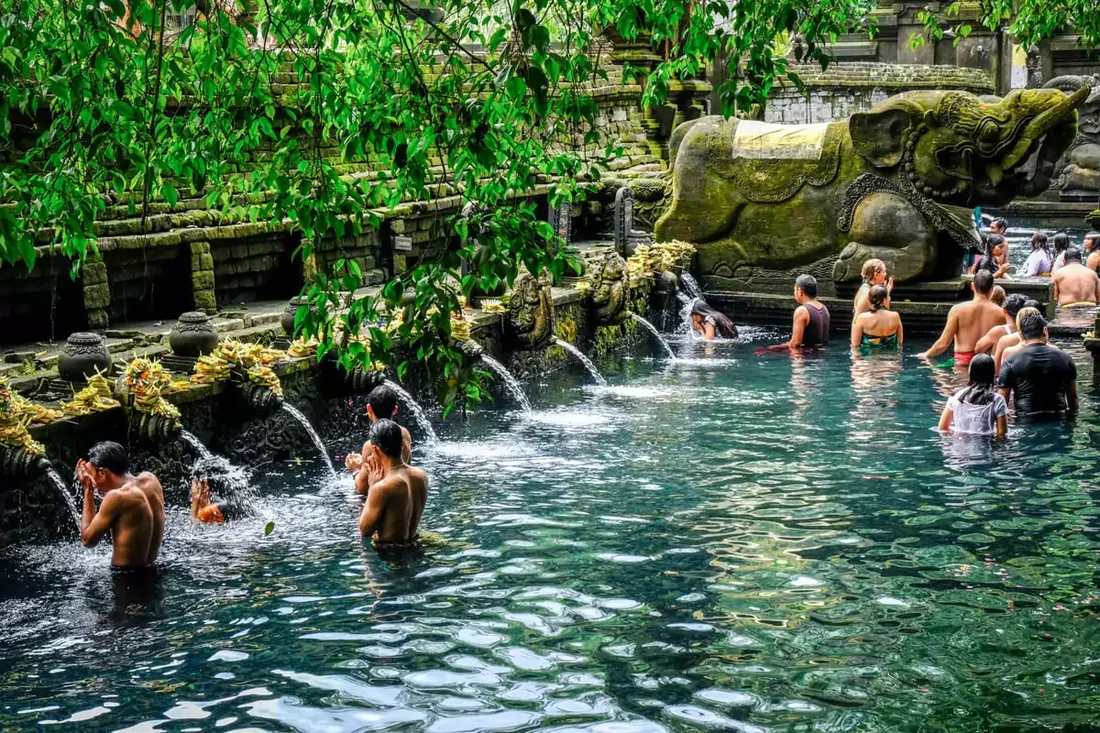
Source: torch.id
Ensuring your safety and well-being during a visit to Pura Tirta Empul is important. Though there have been past concerns about E. coli contamination, thorough investigations have confirmed the holy spring water is safe for visitors. Nevertheless, maintaining personal hygiene is crucial, especially if participating in the purification rituals.
Bathing in the holy water is optional; observing from the sidelines can still provide a meaningful experience. If you decide to enter the pools, follow the guidelines from the temple staff to ensure a safe and respectful visit.
Taking these precautions allows you to fully immerse in the spiritual ambiance of Pura Tirta Empul without compromising your health.
Summary
Pura Tirta Empul is more than just one of the many temples in Bali; it is a sacred site that offers a unique glimpse into the island’s spiritual and cultural heritage. From its historical significance and architectural beauty to the deeply meaningful purification rituals, the temple provides an enriching experience for all visitors.
Whether you are seeking spiritual renewal, historical insight, or simply a serene escape, Pura Tirta Empul is worth visiting. As you leave this holy spring water temple, you carry with you not just memories but a sense of peace and connection to something greater. We hope this guide has inspired you to visit Tirta Empul and explore the spiritual depths of Bali.
Frequently Asked Questions
What is the best way to reach Pura Tirta Empul?
The best way to reach Pura Tirta Empul is to rent a scooter for an economical option, or hire a private car with driver or join a tour for added convenience. This offers you the flexibility to enjoy your visit comfortably.
What is the significance of the purification rituals at Pura Tirta Empul?
The purification rituals at Pura Tirta Empul, known as melukat, hold deep spiritual significance for Balinese Hindus, providing a means for spiritual cleansing and renewal through the use of sacred spring water. Engaging in these rituals fosters a deeper connection to their faith and promotes inner harmony.
Are there any dress code requirements for visiting Pura Tirta Empul?
To visit Pura Tirta Empul, it is essential to dress modestly by covering your shoulders and legs. Sarongs and sashes are available at the entrance to ensure compliance with the temple’s dress code.
When is the best time to visit Pura Tirta Empul?
The best time to visit Pura Tirta Empul is during the full moon or new moon for a more spiritual experience, and visiting in the morning on weekdays will help you avoid the crowds.
Are there other attractions near Pura Tirta Empul?
Yes, you can explore Gunung Kawi Temple, Tegalalang Rice Terraces, and Ubud Monkey Forest nearby, each providing unique cultural and natural experiences.

